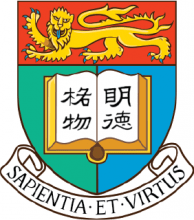
The dominance of China’s universities in the BRICS & Emerging Economies rankings 2016 highlights a wider trend for international students to consider China’s top institutions alongside leading universities elsewhere in the world.
Half the universities in the top 10 are Chinese, with the prestigious Peking University and Tsinghua University taking the first and second place respectively.
While Asian students have long travelled to the US, UK, Canada and Australia in search of the best education, an increasing number of students from India and Pakistan are opting for higher education opportunities in China, propelling the country into a regional hub for mobile students.
Find out more about Asia's top universities
India has a total of 16 institutions in the BRICS ranking this year, behind only China and Taiwan. But none of India’s leading universities features in the top 10, suggesting that an Indian student seeking a world-class education in the region is more likely to make the journey to China than stay at home.
Since 2010, the number of Indian students in China has increased by 50 per cent, from less than 10,000 students to more than 13,500 students in 2014.
Only two universities in Pakistan made it into the BRICS & Emerging Economies top 200, both in the lower half. The number of Pakistani students in China has accelerated over the past years, rising more than 80 per cent since 2010 to reach almost the same number of Indian students.
The biggest international community at Chinese universities is still South Korean students, who made up 16.7 per cent of the international students in China in 2014. But their number has fallen every year since 2010 except in 2012, when there was a small increase. The growth of Indonesian students in China has also slowed down over the same period.
Overall, China aims to reach a target of half a million international students by 2020. However, with the year-on-year increase in international students starting to wane, China’s 39 ranked institutions, among others, will likely be looking to attract more and more students from India and Pakistan to raise the overall number from where it currently stands at 377,000.
Only the top two Chinese universities are counted among the best 200 universities in the world according to the Times Higher Education World University Rankings
But 27 Chinese institutions make it into the upper half of the BRICS ranking, which features 200 universities from 35 countries, including Turkey, Czech Republic, Thailand and Chile alongside Brazil, Russia, India, China and South Africa.
China hosted the third highest number of international students anywhere in the world last year, behind only the US and the UK, and just ahead of Germany.
While 64 per cent of international students in the US study science, technology, engineering or business subjects, 55 per cent of international students in China study a humanities subject.
The motivations for studying a STEM or business subject abroad clearly differ from the motivations for studying internationally for a humanities degree. Given that more than 200,000 international students study a humanities subject in China, compared with only 17,500 international students in the US, it seems that China is a more attractive option for humanities students looking for international experience.
See the full BRICS & Emerging Economies rankings table here.
Data about international students are from The Institute of International Education.
|
BRICS Rank 2015-16 |
World University Rank 2015-16 |
Country |
Institution |
|
1 |
42 |
China |
|
|
2 |
47 |
China |
|
|
3 |
161 |
Russian Federation |
|
|
4 |
120 |
South Africa |
|
|
5 |
167 |
Taiwan |
National Taiwan University |
|
6 |
201–250 |
South Africa |
|
|
7 |
201–250 |
China |
|
|
8 |
251–300 |
China |
|
|
9 |
251–300 |
Brazil |
|
|
10 |
301–350 |
China |
|
|
11 |
301–350 |
South Africa |
|
|
12 |
301–350 |
Taiwan |
|
|
13 |
251–300 |
Turkey |
|
|
14 |
251–300 |
China |
|
|
15 |
301–350 |
Taiwan |
National Taiwan University of Science and Technology (Taiwan Tech) |
|
16 |
251–300 |
India |
|
|
17 |
201–250 |
China |
|
|
18 |
201–250 |
Russian Federation |
|
|
19 |
251–300 |
Taiwan |
|
|
20 |
251–300 |
Russian Federation |


















Have your say